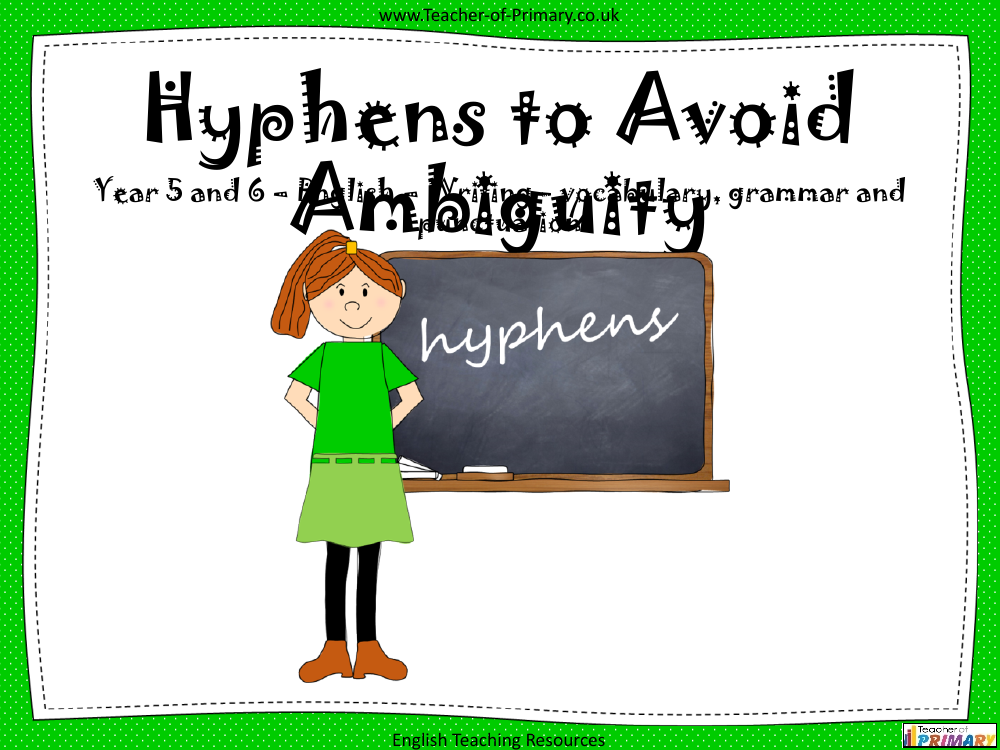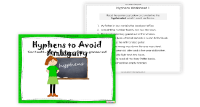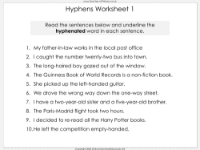Hyphens to Avoid Ambiguity - PowerPoint

English Resource Description
An educational resource for Year 5 and Year 6 pupils focuses on the use of hyphens to avoid ambiguity in writing. The teaching materials include a PowerPoint presentation that outlines the objectives of learning how to use hyphens effectively. Students are encouraged to read aloud examples such as "non-fiction" and "left-handed" to identify the common feature of a hyphen. The resource explains that a hyphen is a punctuation mark used to connect words, parts of words, or words with prefixes, providing examples like "sixty-four" and "part-time." The purpose of hyphens is to make writing more concise and to prevent confusion, as illustrated by the difference between "a man eating shark" and "a man-eating shark."
Worksheets accompanying the presentation challenge students to identify and categorize hyphenated words in sentences, enhancing their understanding of compound nouns, compound adjectives, numbers, and prefixes. For instance, "father-in-law" and "twenty-two" are used as examples. Further exercises prompt pupils to transform phrases into more concise versions using hyphens, such as turning "a girl with short hair" into "a short-haired girl." The resource also demonstrates how the addition of a hyphen can alter the meaning of a sentence, with contrasting examples like "a man eating tiger" versus "a man-eating tiger," highlighting the importance of this punctuation in clarifying meaning. The teaching resources serve as a practical guide for students to refine their writing skills through the proper use of hyphens.

